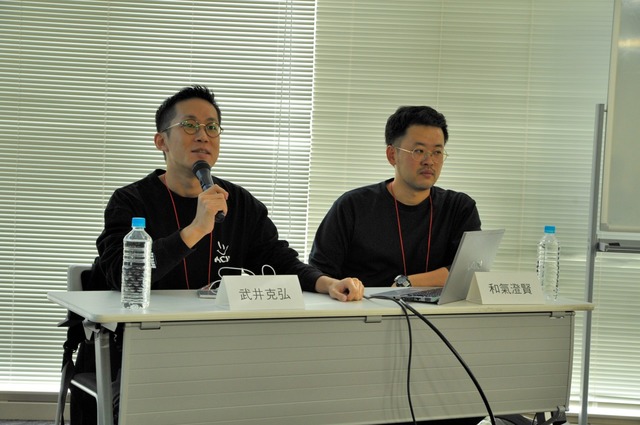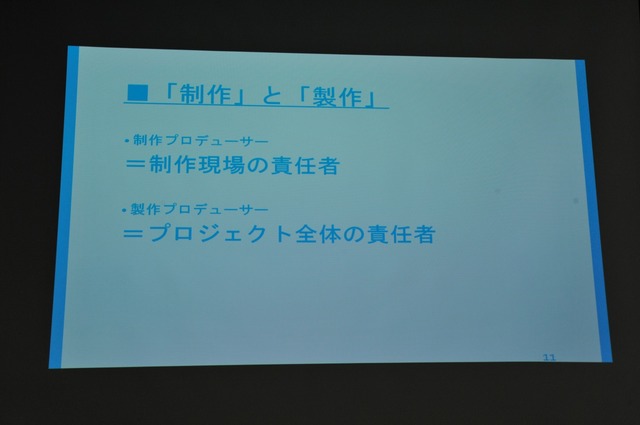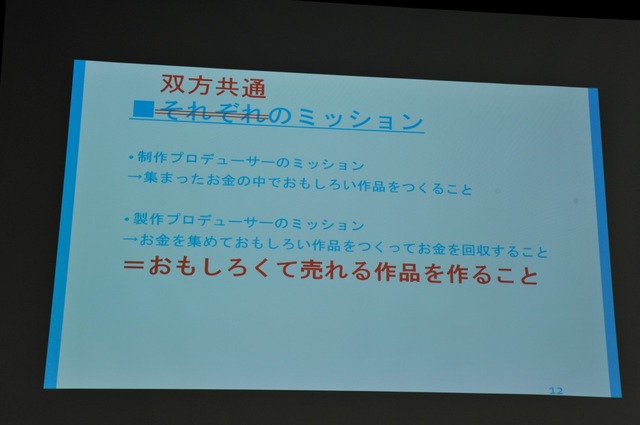The international conference on the future of manga and anime “International Manga Anime Festival Reiwa Toshima (IMART)” was held from Nov. 15 to Nov. 17, at the Toshima ward office. There were 24 sessions of various topics such as; education, technology, marketing, journalism, etc.
This is a report of the seminar, “What kind of story can CG anime tell? Looking forward to a new age of CG anime.”, held on Nov. 17, 2019.
In recent years, the work of “製作 (Seisaku)” producers (producer) and “制作 (Seisaku)” producers (production workers) make a substantial contribution to the uprising of 3D CG anime in Japan.
What do the producers think of 3D CG? What kind of story can CG images weave? Producer Takei Katsuhiro from Toho and Waki Kiyotaka from the anime production company, Orange talked about the present and future of 3D CG anime, using their works as an example.
To begin, they explained the role of producers in anime production. A producer is in charge of the whole anime production and there are two types of them; “製作 (Seisaku)” producers (producer) and “制作 (Seisaku)” producers (production workers).
“製作 (Seisaku)” producers are the ones in charge of the whole project, responsible for planning and acquiring rights of the works, composing production committees, production management, advertising, etc.
“制作 (Seisaku)” producers are also known as the manager of the production worksite, they are responsible for budgets and schedule for the production studio,, quality control of the work, etc.
Takei emphasized the importance of cooperation between the two saying, “The two Seisaku producers working along with each other is the key to create an even better anime.”
After explaining the differences between the two producers, they brought up “Land of the Lustrous”, a TV anime series they both were involved with. Takei, looking back, said he felt that 3D CG images would well fit the firm appearance of the characters made of jewels in this title.
Waki, on the other hand, introduced the techniques used to recreate the world of the original work into animation by using making-of materials. He broke down the process of creating the unique texture of the head.
They continued with “Sobae”, the short anime created by the two under the name “Project”. This was a PR animation for the commercial facility developer, Marui group. The 3D CG anime can be seen for free on YouTube and other websites.
Rain is the central motif of this work. They showed the process on how the photorealistic 3D CG images of the raindrops and vinyl umbrella gradually turn into anime-style images. Making the flutter of the cloths as soft as possible was the biggest challenge of the 3D CG imagery, they say.
The third title they brought up was “BEASTERS”, which is a TV anime created by Orange and has been broadcast from Oct. 2019. A 3D CG anime set in a school in which anthropomorphized carnivores and herbivores live together.
They say that the biggest challenge for this title was the animals' “fur” and “three-dimensional skeletal structure”. How to apply 3D CG in very anime-ish fur, and how to give the animals with three-dimensional skeletal structures rich expressions.
To solve the latter, they used facial motion capturing and filmed human expressions for the 3D CG characters. They went through much trial and error to get it just right for the skeletal structure of the animals.
In the end, they introduced the original 3D CG anime film, “HELLO WORLD” planned and produced by Takei. He explained the “metafictional structure of the layering of 3D CG and the story content”, which he built in “HELLO WORLD” and also relates to the theme of this session. The session ended with Takei's words; “I felt confident in not receiving any comments of the anime being good nor bad because of the CG images. My current goal is to eliminate the question of 'Will it work well with CG?' by raising the level of CG expressions and breaking boundaries of CG and non-CG images.











